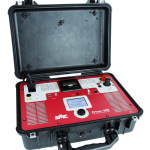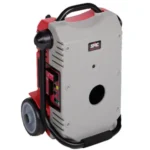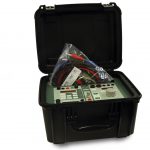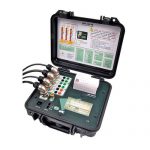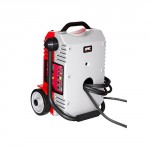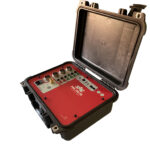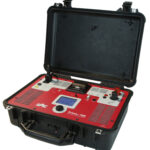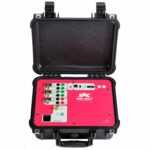Resistance Testing Solutions

The different resistance testing checks the condition of a circuit or equipment, and the meaning of the test and the results of the resistance value depends on the element tested.
Accordingly, the resistance testing of electrical equipment covers a wide range of techniques depending on the nature of the element tested and the objective or type of test required. For example, insulation resistance testing in a breaker is in the range of 1000 MΩ, while the contact resistance testing to the poles results in the range of tens of micro-ohms. All are resistance testing, but techniques and related testers for each one differs much according to the objective sought and element tested:
Description
Related Products
Additional Information about resistance testing solutions
Contact resistance testing
The contact resistance testing of electrical connections is very important for contacts that carry large amounts of current (e.g. switchgear busbars, circuit breakers, joints, etc) as higher contact resistance leads to higher losses, lower current carrying capacity and dangerous hot spots in the substation, so that resistance testing is used for detecting and preventing future problems. Contact resistance testing is performed using micro-ohmmeters, which use the four-wires voltage drop method for accurate measurement. SMC offers different solutions for this application:
- PME-500-TR: combining two test sets in one, providing in the same report the timing and synchronization of the circuit breaker poles, and the 3-phase contact resistance measurement.
- New PRIME 600: the top range of µΩmeter in the market, pure DC with smart control up to 600A, also including Dynamic Resistance Measurement, Dual Ground, and wireless remote control.
- RAPTOR: includes a template for contact resistance testing, enhancing the Raptor System multifunctionality.
Insulation resistance testing
For transformers, insulation resistance testing determines insulation from windings to ground or between individual windings, being measured directly in megohms or calculated from measurements of applied voltage and leakage current:
- The SMC Raptor System also includes the insulation resistance testing of transformers with the use of the high voltage Raptor HV unit, through typical withstand voltage and dielectric strength testing.
Ground resistance testing
The particular case of ground resistance testing includes many types of tests and related equipment depending on whether the target is the resistivity properties of the ground electrodes, soil and connections, or the interaction and condition of the whole ground grid for the safety performance of the grounding system in the substation. In this regard, as indirect resistance testing, the following solutions are included in the Raptor System:
- Ground Grid Testing: Raptor template for detecting bad or eroded contacts in the ground grid, testing the resistance integrity of the system through high current method.
- Step & Touch Testing: automatic function for measuring the step & touch voltage characteristics of the protective earthing installations in substations, and discovering ground potential rise hazards, which are relevant to the proper ground resistance distribution through all conductors and resistive layers.
For more information, please check the related resistance testing products or contact SMC.
For additional Information about resistance testing solutions, see the following contents
- Contact resistance test : Typical method for contact resistance test. Different EuroSMC solutions for contact resistance test.

